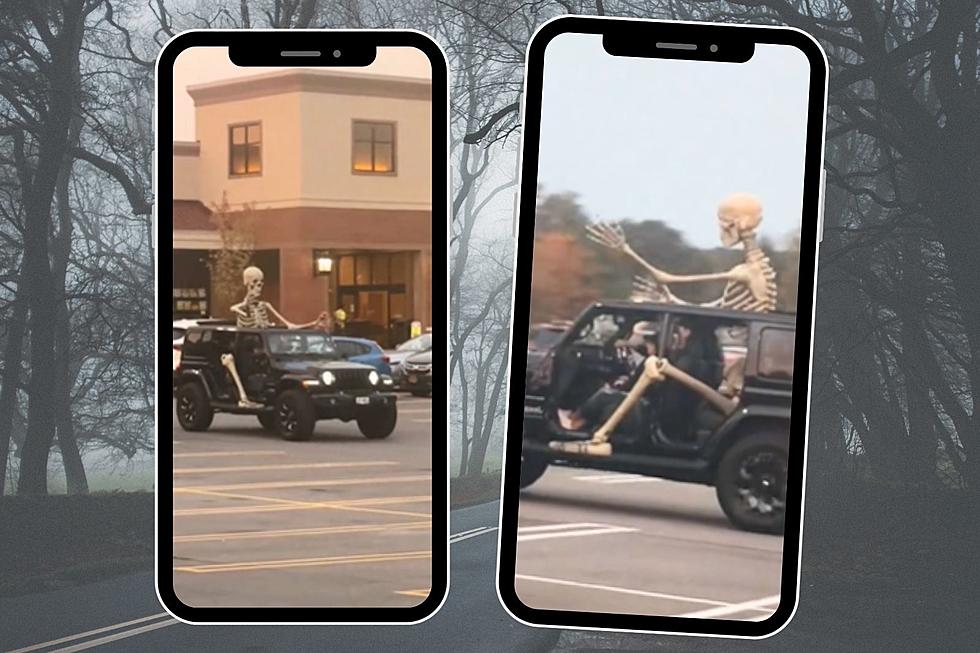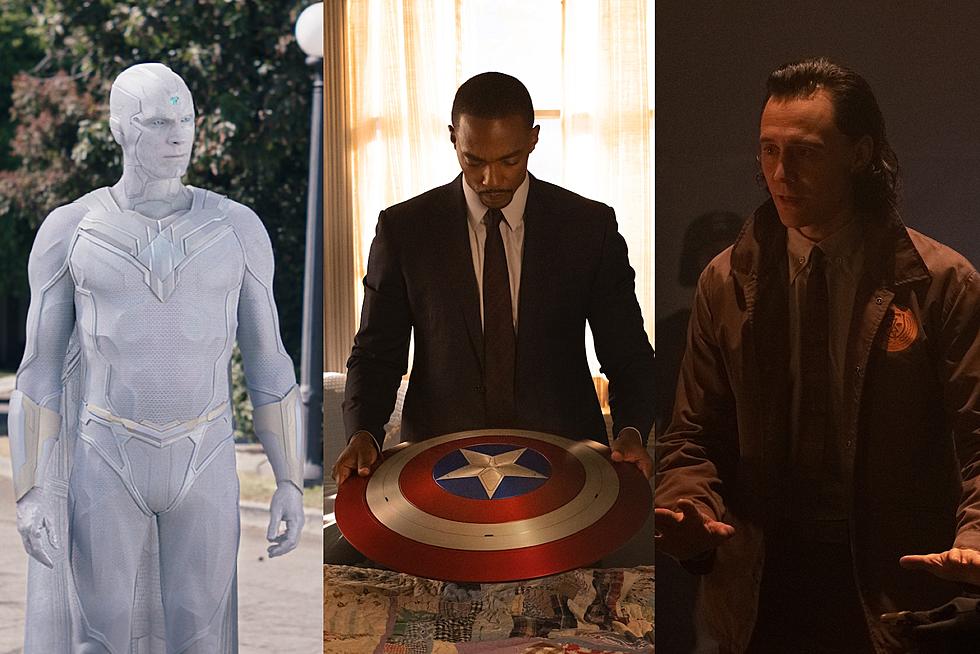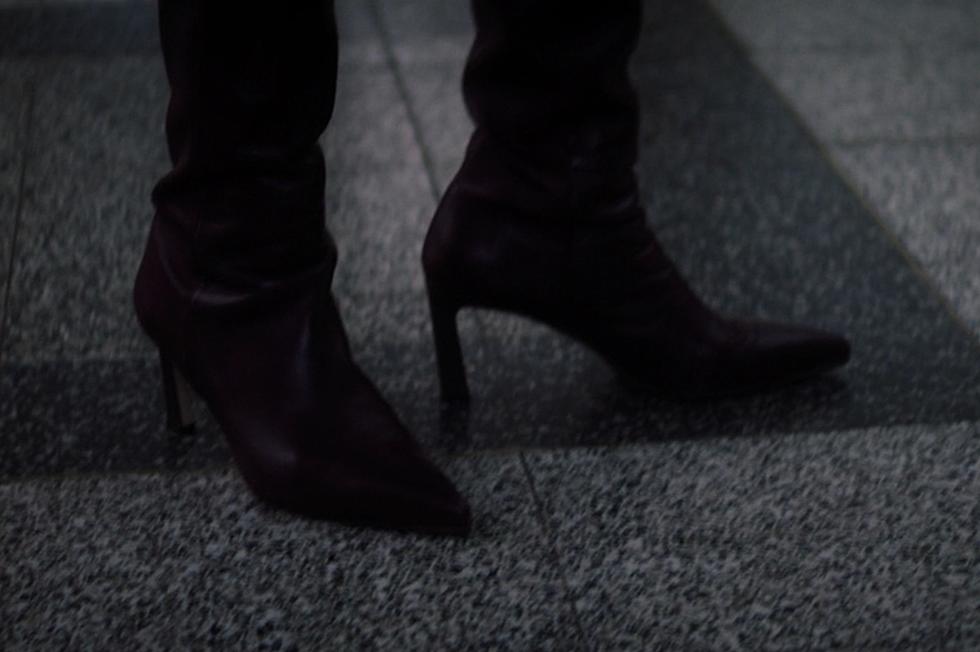
Deconstructing The Horrific And The Humane In Kerascoet & Fabien Vehlmann’s ‘Beautiful Darkness’
It is a truth, universally acknowledged, that Fabien Vehlmann and Kerascoët's Beautiful Darkness has been one of the undisputed standouts in the not unglorious year of comics 2014. Originating from the mind and sketch/notebooks of Marie Pommepuy (she, and partner Sébastien Cosset collaborate under the pen-name Kerascoët), the story of a group of tiny people springing from the body of a dead girl in the woods and the vicious lengths and efforts they go to to survive is appreciable on several, complex levels. One of the facets of great art is that it lingers in the mind, burrows and shifts, dredging up thought and questions, analyses, re-evaluation, and Beautiful Darkness is no different. And so, to accompany my original review, I've compiled a deconstruction of sorts presented here as various questions (answered and unanswered) and theories that dig further into the text and its potential readings.
The Four Characters
'Beautiful Darkness isn't simply deft juxtaposition of cutesy, attractive drawings meets dark subject matter; it's an almost casual study of how easily, how naturally, people revert to a base survival instinct, the roles and groups that develop, and the question and cost of holding onto one's humanity.'
In addition to the general interpretation of the themes presented in Beautiful Darkness (as quoted above), there exists another popular reading of the story -- and one that can exist concurrently to the first -- that the tiny people who exit the dead Aurora's body represent aspects of her personality and being, sprung to life and released upon her death. So let's examine that more closely, and the degree to which it fits the narrative. Whilst it's not possible to identify each of the tiny people as specific attributes -- there are simply too many -- there are four characters we meet who are clearly significant. These are the four whose story-lines we follow throughout the book: Aurora, Jane, Zelie and the nameless, shaggy-haired, slightly crazy-eyed character who refuses to leave the body of the dead girl. A superficial glance at trait theory, which is an approach to human personality that looks to measure patterns of behaviour, thought, and emotion, loosely allows each of the four to be embody a certain trait:

- Psychoticism: Zelie is typified by the aggression and interpersonal hostility marked by psychoticism, she's manipulative, cold, and calculating from the outset. Zelie is set apart from the others (Aurora and Jane aside) in that they are seemingly unaware and guileless in their motivations and resultant blasé cruelty, even to the point of putting themselves in danger, whilst she is fully conscious and in charge of everything she does- killing, bullying, ruthlessly planning her rise to power.

- Openness to explore/openness to experience and intellect: This category is most applicable to Jane, the wise, assured one who appears adult, grown-up, where the rest are portrayed as child-like. Jane leaves the others to pursue her own path straightaway, as if knowing what the fragile collective will deteriorate into. She is largely ambivalent/aloof morally, choosing to remove herself from the situation and look out for herself rather than take sides one way or another.

- Neuroticism: A little trickier, this correlate closest with Nameless Crazed Eyes, who has degenerated beyond childhood to a base, primitive presence that is an amalgamation of what's left of the girls instinct mixed with fear. She doesn't speak much or socialize and affiliate herself with anyone, not moving beyond what she knows, and clinging to the body as a safe haven. Neuroticism is linked to the prediction of negative life experiences, and a tendency to become upset or emotional, and Nameless is in a constant state of worry and fear as to what horrible event will befall her next, despite the worst having already occurred.

- Conscientiousness: Principled behavior guided by one's conscience; this epitomizes tiny Aurora (as opposed to dead girl Aurora). She is portrayed as the blonde, golden princess, the one who associates herself most closely to the essence of the human girl, thus retaining her name, and like Zelie and Jane she possesses deliberation; an awareness of what she's doing, a compass of right and wrong.
Along with Hector, who represents a weak masculine component, quickly killed off, these are the four standout categories of the dead girl's personality, with a mill of less prominent others- had she lived longer, perhaps more would have formed, or one may have been obviously stronger than the rest. In her attempts to organise the little folk, Aurora is ostensibly trying to pull and hold together the elements of herself, to no avail. Having a balance of traits within a group would help to neutralize the potency of each concentrate, but free and divided their ability to function to purpose is skewed and lost.
The trait theory reading, where one element of the personality becomes more dominant and asserts itself, also ties in with another interpretation: that the four characters represent potential versions of the human Aurora in various stages of life. And so 'tiny' Aurora's (as the strongest persona/trait at the outset, and the closest essence of the girl at the time of dying) journey sees her discard and overcome each of these as she evolves into a 'normal' state. The primitive 'baby' is left behind, Jane -- the idealized adult woman (allowed to be such due to a solitary existence) is killed off, and Zelie as the 'bad' side is thwarted and assimilated -- mirroring a real-life internal growth scenario. There's a critique here of the one-dimensional tropes of woman-hood, frequently found in fairytales and beyond -- 'the good girl' 'the bitch' 'the mad-woman' -- none of which are allowed to exist, or even make any sense on their own, until Aurora inhabits aspects of each and becomes a more complex being. Conversely, it can also faintly be read as a de-construction of the manic pixie dream-girl- the requirement for women to be all things at all times, and the compromise of one's values and self in the pursuit of a non-existent ideal.
A Crux: Assimilation Or Death
Aurora's journey is the center of Beautiful Darkness. She begins as an absolute -- the epitome of all that is good and kind and pure, yet she is equally as guileless as her off --handedly crueler counterparts -- it simply manifests in a different way. In Aurora's case, a belief that everyone else is equally as good, equally as kind, equally as moral, wanting the same, right things. She struggles to remain positive, attempting to maintain peace between groups suspicious of one another, organizing, placating, but is betrayed in love, in friendship, in power and politics, turn and turn again. Unlike most fairy-tales, the role of the good princess is subverted; Aurora changes. She adapts. She kills. She is not self-sacrificial in the sense that she doesn't lay down and die, or plunge a dagger into her bosom, but she fights to live. Even that comes at the nth, after she is relentlessly pushed and pushed -- after running away, after attempting to withdraw and be on her own, she is again faced with the same choices -- the crux of the human condition: subjugation, compromise, assimilation. She compromises her principles and morality, becoming what is necessary in order for her to simply survive. She doesn't give herself up for others, she gives up parts of herself for herself -- and that's a unique strength, that's the sacrifice that people -particularly women- aren't encouraged to make.

Although human Aurora lies dead and decaying, she is forever preserved in her goodness and outlook of the world, never having to change, never having to face such decisions. Aurora and Zelie, the two characters clearest in their morality -- or lack thereof -- are very much a child's (the girl's) version of good and evil; it is tiny figment Aurora who continues her journey, acting as a placeholder for what would have been. The human Aurora, unlikely to ever maim or murder, but grit her teeth and toe the line of social conformity and convention, is cast off, and tiny Aurora -- not a real girl, but a creature, which makes her transformation that bit less disconcerting -- unleashed. In death alone is the girl spared, and saved from the choices of humanity.
The Man And The Dead Girl: Who And What
'Cover her face; mine eyes dazzle: she died young.'- The Duchess of Malfi, John Webster
The opening passage in which we see Aurora entertain Hector with tea and cake is filled with double readings; the very first dialogue you read/hear is an excited 'He's coming! He's coming!' -- ostensibly in reference to Hector's arrival -- with Aurora responding with a frantic 'But I'm not ready yet!' A few pages on, the roof caves in and the tiny people stream out of their housing: the body of a young girl, no more than 11-years-old. It is nighttime, and as the body decays over the course of the book, the assumption is that this is the day of the girl's death, with the body in the initial stages of decomposition.
It's helpful to understand the rough timeline of decomposition here: in the first, 'fresh' stage of death, when the heart stops beating, the body's cells and tissues stop receiving oxygen, with brain cells the first to die, usually within three to seven minutes. Soon after this, putrefaction begins to occur: as pressure builds, gases and fluids escape through natural orifices -- which is what seems to be occurring as the tiny people flee from the deluge of fluid and matter, indicating the girl has died within the last few hours, or earlier. This also fits in with the reading of the tiny people as various literal manifestations of the dead girl's personality, birthed into unnatural being upon her death.
Although mystery surrounds the girl and her death, there are some things we can ascertain: she is wearing wellington boots, a dress with a cardigan, and a satchel, there is a plaster on her leg. The satchel is full; it contains books with her name inscribed on them- 'Aurora', her pencil case, and food. While the boots may indicate she was planning a route through the woods, that hypothesis pales as her body remains undiscovered throughout the book. She may have been on her way to school, or simply decided on a day out exploring the woods without informing anyone.

No external injuries are visible on her body -- no blood, no rupturing or breaking of the skin, nothing to indicate cause of death, although the back of her head is on the ground, and her neck is similarly indeterminate -- she may have been strangled. Similarly no attempt seems to have been made to hide or cover the body. But where do the suggestions of violence and murder stem from? It's possible, after all, that the girl died suddenly from natural causes. However, halfway into the book, while Aurora is bathing in a pool she's found, she's disturbed by a (human-sized) man walking in her direction; she looks up at him -- his face is obscured by sunlight, giving him an ominous, headless appearance, the rest of him cloaked in inky shadow. These signifiers, and the parallel of a naked, vulnerable Aurora once again being in danger, coupled with the probability that the man would have to pass by the body which lies only a few meters away shed greater meaning and depth on those opening lines of dialogue; the girl is recently dead, and the first words we hear may likely have been an echo of her last; her final thoughts: 'He's coming! He's coming!' 'But I'm not ready yet!' and then as the world literally begins to cave in, a cry of- 'But this isn't how things were supposed to turn out!' .... It's not apparent at that point, but it is the first indication of violence and threat.
What does it mean, then, that Aurora ends up finding safe haven in the home of the man who killed her? A form of denial, Stockholm syndrome, or perhaps that she has now become more like him than the girl she was once part of -- murderous and isolated... the abused becoming the abuser. In another sharp jab at the fairytale facade, she calls him 'her prince' (in the Disney iteration of Sleeping Beauty, the princess is named Aurora; here, her 'prince' and 'sleep' are substituted for 'murderer' and 'death') an indication that all vestiges of the human Aurora have essentially faded away.
The Returning To Life Dream Sequence
This is one that remains inexplicable to me: there's a very curious passage where Nameless crazed eyes has a dream -- or nightmare -- in which human Aurora wakes up. In the dream, the girl lies on a carpet of leaves surrounded by trees of beautiful autumnal golds and browns, peacefully slumbering, her head resting on her arms, her blonde hair shining, rays of sunlight warming her face, the color of her clothing once again discernible, opening first one eye then the other. Then she stands, brushes off some leaves and walks out of the woods. Immediately after Nameless jolts awake from the dream, mumbling 'nightmare... nightmare,' she pops her head through an eye-socket to look out and is relieved to see all is at it was- the body still decaying and skeletal. It doesn't quite fit with the emotional tone of the sequence in which Nameless is first afraid and then relieved, but perhaps it speaks to her fear of leaving the body, a hope that the girl Aurora may be restored to life and she would be left behind. Her fear of the dead Aurora moving on prevents her from doing the same which ultimately reiterates the message meted out to Aurora: adapt or die.

A Central Juxtaposition
The pivotal essence of what makes Beautiful Darkness so effective is Kerascoët's art and style, the depiction of which emphasizes the extremities of the subject matter further. Much of the reaction elicited from the reader is due to the juxtaposition of the sweet, jaunty peppiness of the lines against the genuinely horrific things taking place. Juxtaposition is a term that's often overused -- misused -- so what do we mean by it here? The general definition of juxtaposition is the placing of one element against another in order to produce a particular, usually contrasting, effect. A large part of it has to do with psychology -- pre-determined associations and memories of the reader, which are cleverly manipulated by Kerascoët. It's a string of connecting markers that are learnt over time; for example light and bright = goodness, positivity, happiness, so looking at pages with light bright colors the brain instantly makes those associations. Similarly, a large segment of widely exposed culture has portrayed tiny fairy like creatures as ethereal, and a combination of prevailing ideologies which allows to make jumps that equate a string of concepts with one another: smallness >cute>childlike>innocent. The visual presentation somehow serves to emphasise these ideas more than the written word.
Juxtaposition can rely on the effect of overt shock -- a vagina/a dewy flower! -- but the effectiveness of Kerascoët's choices come from the subtle execution. Just as much of the actions of the tiny people are shocking precisely because they're enacted in an offhand, unaware manner, there are no screaming arrows directing forcing you to look here or there -- the circumstances portrayed almost as laissez faire, normal: little people bouncing around joyously in a mound of maggots, playing with a ladybird as flies swarm out of the dead girls nostrils in the background. The contrast of these images with one another, and the themes in the book underscore the central juxtaposition of life, of humanity: a ball of beauty melded with cruelty and death and decay. Here we have nature seen through to its entirety, stripping away all notions of romanticism: its wonder, its allure, its baseness, and a reminder that man is the most beastly of all.
Vehlmann said in an interview that he and Kerascoët did not determine a 'truth' about Beautiful Darkness in beginning or end -- not even giving fleshing out the backstory of the dead girl or how she had come to be there, instead taking a more organic approach to the text as it was composed. And that, for me, is crucial to what makes this book so engrossing and appreciable on multiple levels; that it doesn't seek to provide answers but forms questions , puts forth a mix of ideas, some semi explored that set off a tangent of thoughts, leaving you mulling for days. It's difficult to express the breadth of its excellence, but I hope with this essay I've managed to convey some of the achievements encompassed within.

More From ComicsAlliance









